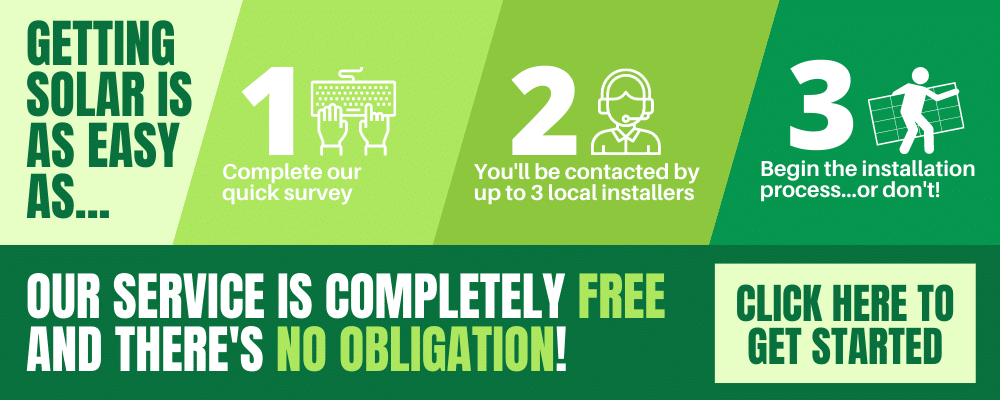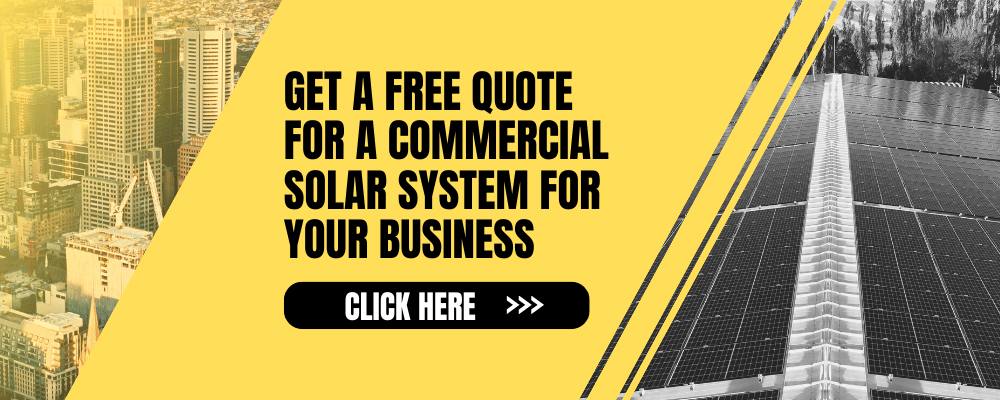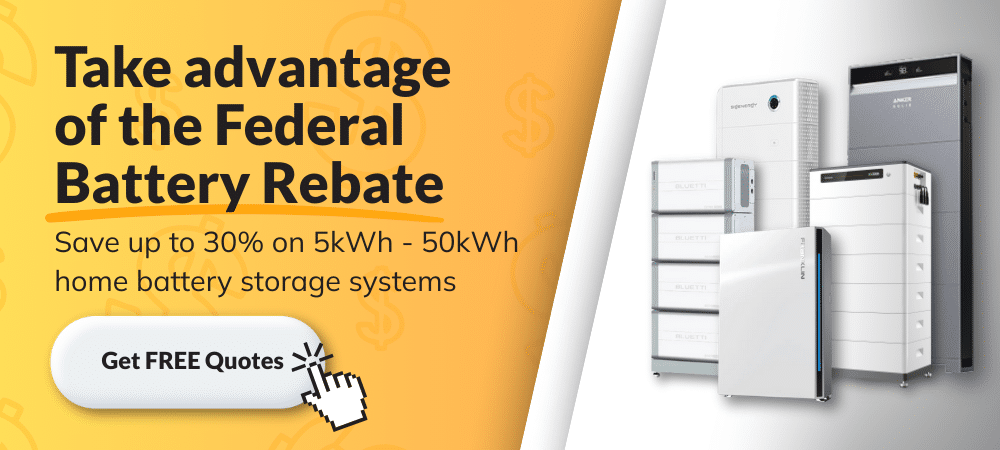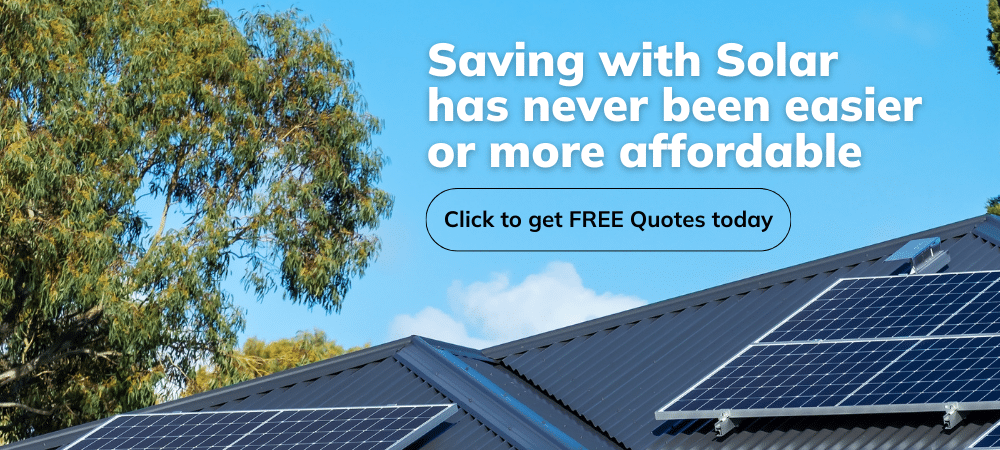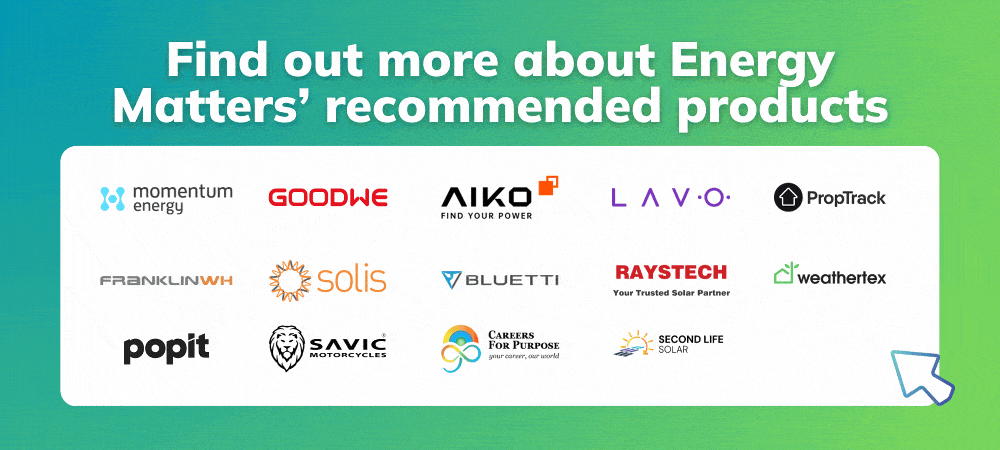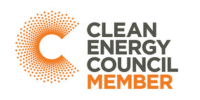More than 4 million rooftop solar PV systems have been installed in Australia since November 2024. Around 30% of residences in Australia have rooftop solar PV, which has the highest solar adoption rate worldwide.
Energy storage via a solar battery is a great option to make the most of your high-value solar PV system. Energy Matters can help you make an informed decision on the suitability of a solar battery for your home and needs with our Solar Power and Battery Storage Calculator.
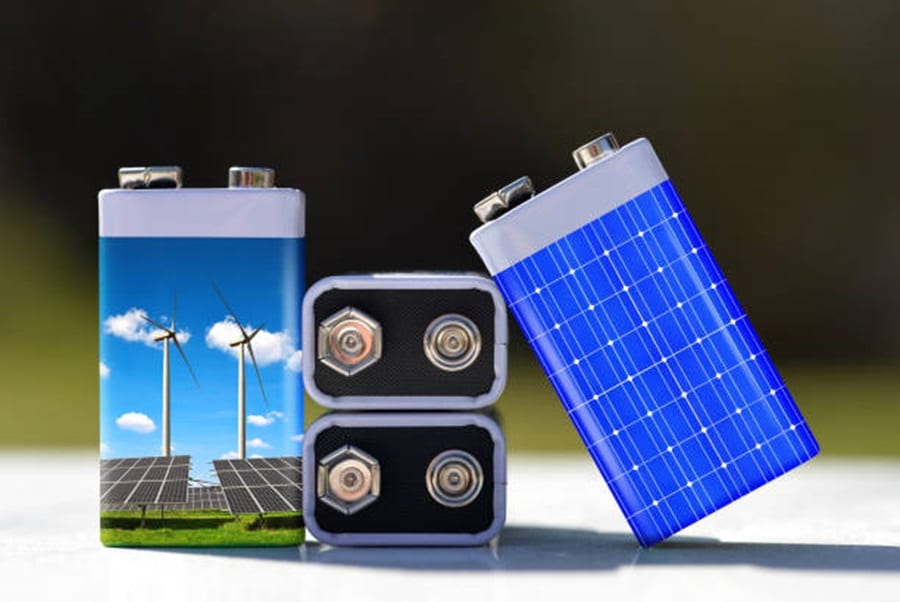
Two primary sources of solar rebates or incentives are available in Australia.
- State governments (some, but not all)
- Electricity retailer (on occasion – retailer dependant)
On this page
Are there any federal rebates or incentives for battery storage installations?
As of 1 July 2025, the federal government will provide financial incentives for the installation of home battery storage for residential homes and small businesses. Find out more about the Federal Battery Rebate by following the link below.
Feed-in Tariff (FiT)
When you export excess electricity from your solar installation to the grid, you are compensated with a solar Feed-in Tariff, or FiT, from your electricity retailer.
The feed-in tariff’s value varies between states and among electricity retailers. The government introduced FiTs as a financial incentive to increase demand for solar PV systems. Feed-in tariff rates have significantly decreased as the solar industry has expanded, and solar panel costs have fallen by roughly 80%.
Maximising your savings with solar battery rebates
Navigating the landscape of solar battery rebates can significantly reduce the upfront cost of your energy storage solution. Understanding these incentives is crucial for homeowners looking to optimise their investment in sustainable energy.
When considering a solar panel and battery package, exploring the various rebate programs available in your region is essential. These rebates are designed to encourage the adoption of clean energy technologies, making installing a comprehensive system more affordable.
- Understanding solar battery storage
- Understanding how solar battery storage systems work is essential to fully leveraging the benefits of a solar battery rebate. These systems store excess energy generated by your solar panels, allowing you to use them during periods of low sunlight or power outages, which enhances energy independence and reduces reliance on the grid. A well-designed solar battery storage system can provide substantial long-term savings and increased energy efficiency resilience with available rebates. Learn more about solar battery storage.
- Determining the right solar panel system size
- The size of your solar panel system heavily influences the effectiveness of your solar panel and battery package. To maximise your solar battery rebate, install a solar panel system sized appropriately for your energy consumption and storage capacity. Calculating the ideal solar panel system size ensures you generate enough power to charge your battery and meet your household’s energy needs, optimising your savings and the return on your investment. Find out how to size your home solar system.
By taking advantage of available solar battery rebates and carefully planning your solar panel and battery package, you can save significantly while contributing to a sustainable energy future.
Learn more about the Cheaper Home Batteries Programs on our comprehensive page.
State solar battery rebates and subsidies in Australia
Solar battery systems traditionally have not enjoyed the same solar rebates in Australia. But some recent government solar battery rebates, and solar battery subsidies, are available to support the purchase of solar batteries. There are currently no state government incentives for solar batteries if you live in Queensland or Tasmania.
Victoria (VIC): Solar battery rebates and incentives
Solar battery loans
Solar Victoria is no longer accepting applications for interest-free loans to install battery systems.
If you have already applied, you will need to wait for eligibility confirmation before starting financial checks, complete a credit check, submit your financial documents, and wait for loan approval and your QR code. Installation must be completed within 120 days of loan approval, after which you will begin monthly repayments over four years and pay any remaining balance directly to your retailer.
As part of the process, applicants must provide a recent credit report, complete a financial self-declaration, and submit proof of income to meet responsible lending requirements. Separate credit checks and declarations are needed for each applicant.
New South Wales (NSW) : Solar battery rebates and incentives
The NSW battery installation discount has ended.
However, the Australian Government’s Cheaper Home Batteries Program discount is now available.
Additionally, the NSW Government has increased its incentive for connecting batteries to a Virtual Power Plant (VPP), and this can be combined with the Australian Government’s battery discount.
For more information on NSW solar battery rebates, visit our NSW Battery Incentive page.
Australian Capital Territory (ACT): Solar battery rebates and incentives
Sustainable Household Scheme
From 1 July 2025, the Sustainable Household Scheme has introduced changes. All new loans under the Scheme now have a 3% interest rate. Solar panels are no longer covered by Scheme loans, though eligible concession card holders can still access zero-interest loans for solar through the Home Energy Support Program. Any installations approved before 30 June 2025 must be completed by 1 November 2025, or the loan may be reviewed.
Northern Territory (NT): Battery storage rebates and incentives
Home and Business Battery Scheme
The Home and Business Battery Scheme (HBBS) has reached its $6 million funding limit and is now closed to new grant applications.
Applications already submitted but not yet approved, as well as any new ones received, will only be assessed if funds become available, with no guarantee of approval.
Applicants can still choose to install batteries at their own cost, but only installations with formal HBBS grant approval will receive funding. If work is carried out without prior approval, applicants will need to cover all costs themselves.
Check out our page to learn more about the battery system rebates in NT.
Tasmania (TAS): Solar battery rebates and incentives
Tasmania's Energy Saver Loan Scheme
Tasmania’s Energy Saver Loan Scheme offers interest-free loans of up to $10,000 to assist households, landlords, small businesses, and not-for-profit organisations in adopting energy-efficient products. Eligible items include PV systems, solar battery storage systems, reverse cycle air conditioning, hot water systems, induction and ceramic stove tops, energy-efficient white goods, double glazing, and insulation. This initiative aims to promote energy efficiency and sustainability across the state.
Key features:
- Loan amount: $500 to $10,000
- Repayment terms: 1 to 3 years
- Interest rate: 0%
- Customer fees: No establishment or account-keeping fees (late repayment fees may apply)
Eligibility criteria:
- Residential households: Tasmanians applying for their principal place of residence
- Landlords: With residential tenants
- Small businesses and community organisations: With electricity consumption lower than 150 MWh per year
Queensland (QLD): Solar battery rebates and incentives
There are currently NO solar rebates or incentives in Queensland.
South Australia (SA): Solar battery rebates and incentives
There are currently NO solar rebates or incentives in South Australia.
Western Australia (WA): Solar battery rebates and incentives
WA Residential Battery Scheme
The WA Residential Battery Scheme, launching by 1 July 2025, will provide 20,000 households with rebates and interest-free loans to install home battery systems. The program aims to make energy storage more affordable, helping Western Australians cut electricity bills and improve energy resilience. Only batteries installed after the scheme begins will be eligible, and applicants must use approved suppliers and equipment. This state initiative aligns with the federal Cheaper Home Batteries Program, which offers subsidies from July 2025 to further reduce upfront costs and support the national shift to clean, reliable energy.
Ready to upgrade your solar systems and take your energy savings to the next level?
Embrace the energy efficiency revolution by upgrading your solar systems and adding a battery or solar inverters with Energy Matters.
Check our page for our recommended solar products.
With our 3 free solar quotes, you can compare plans from pre-qualified and vetted installers in your area and find the perfect solution for your home and business. Harness the sun’s power and save money on electricity bills while reducing environmental impact. Let Energy Matters guide you towards a brighter, more sustainable future.





